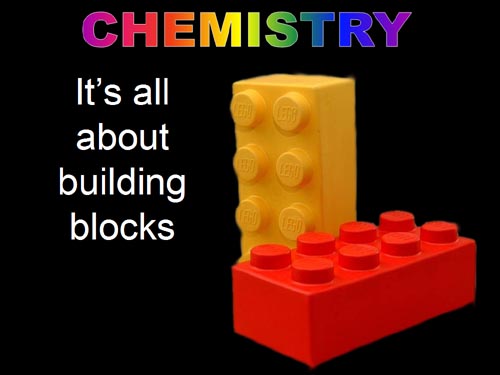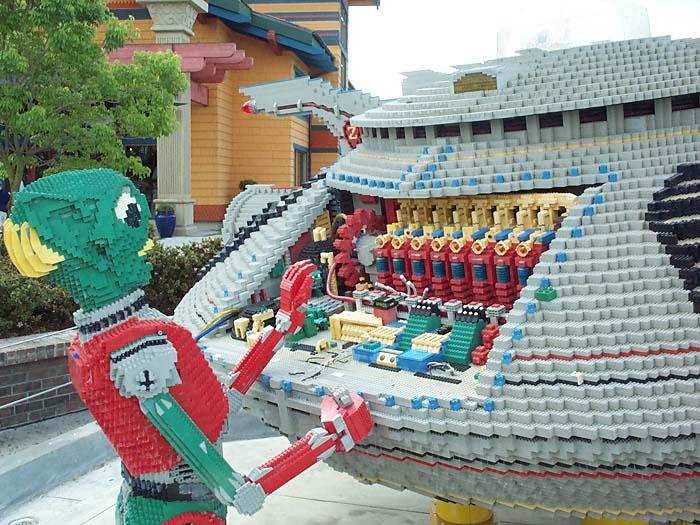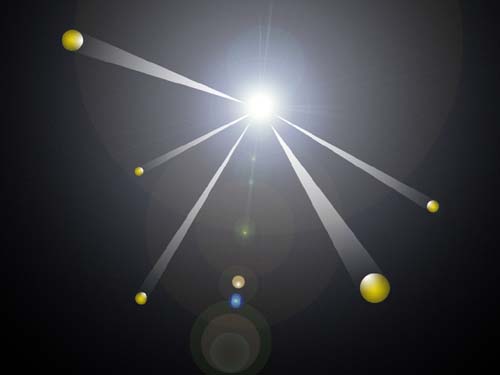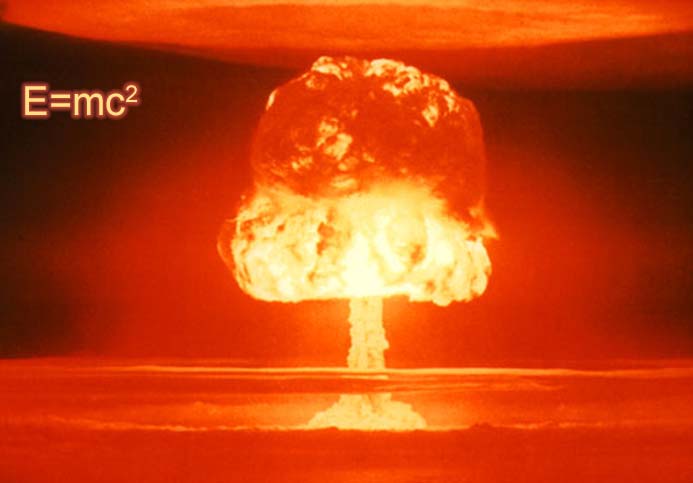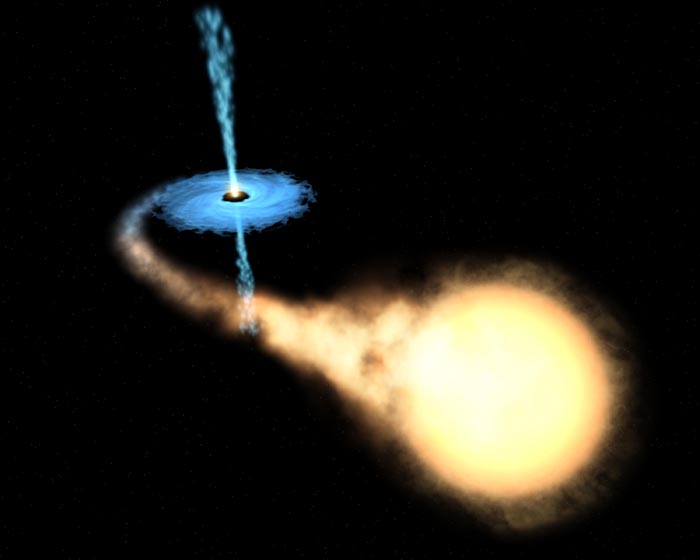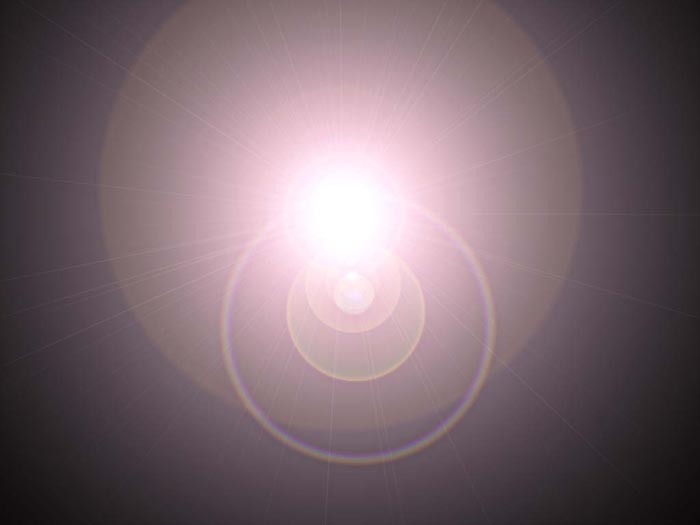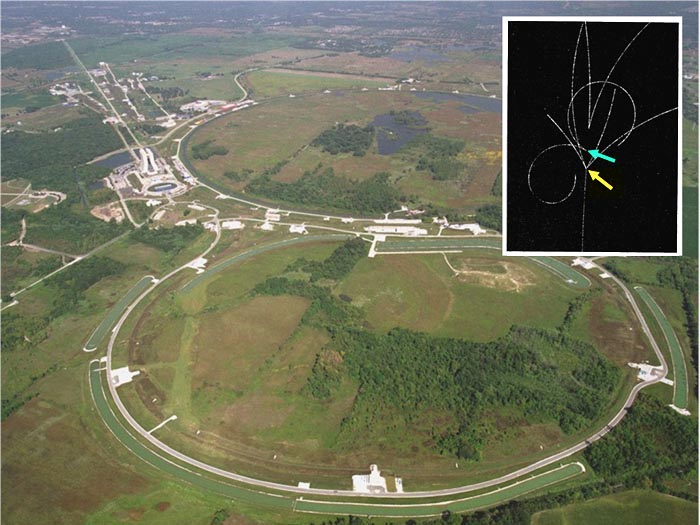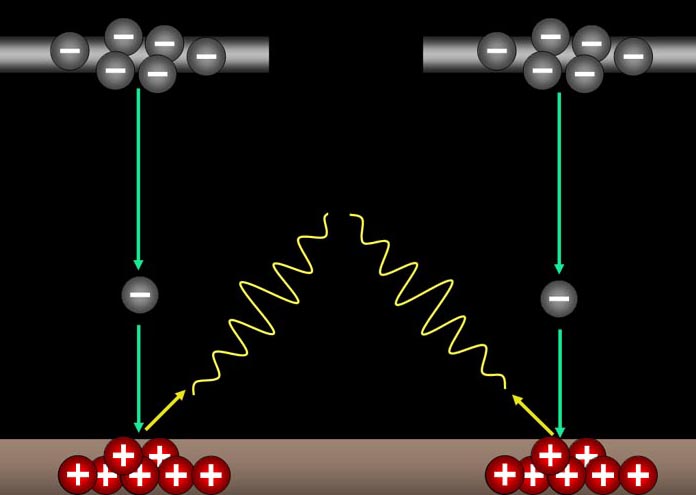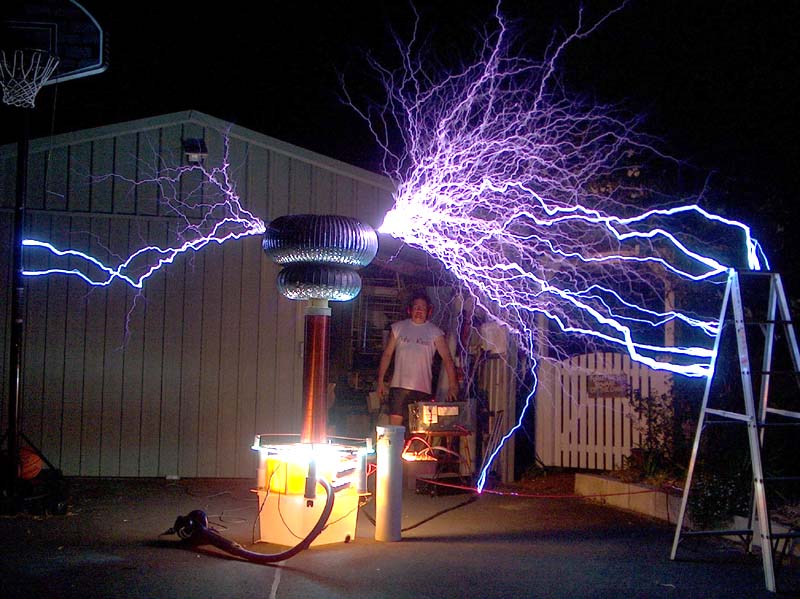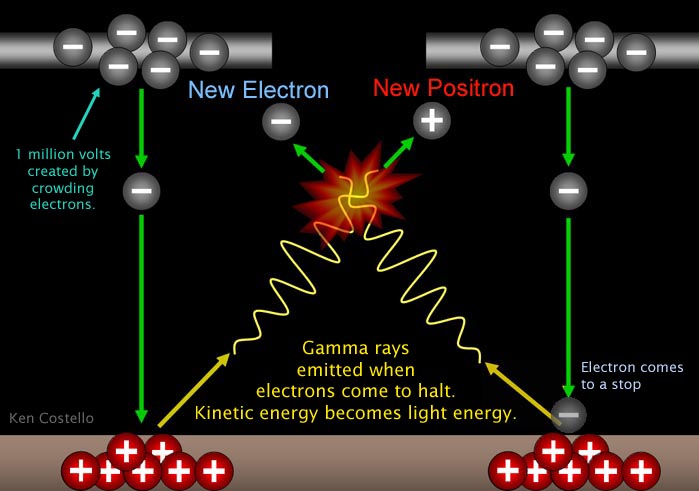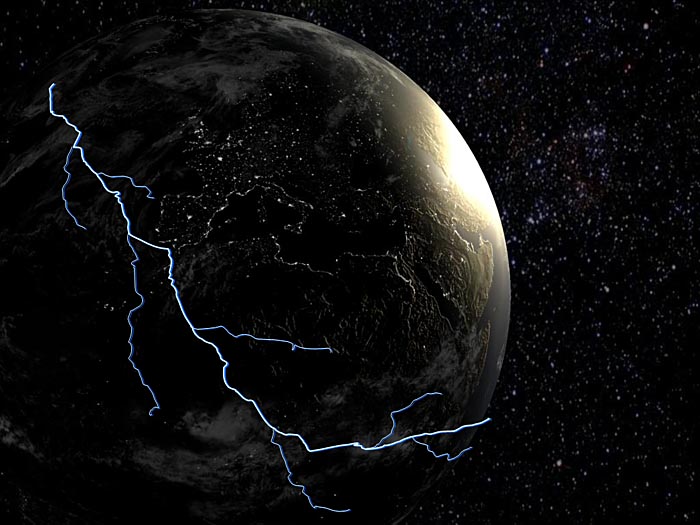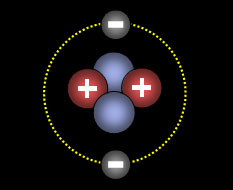|
|
With the millions of different chemicals and the complexity
of living things, chemistry can be overwhelming. However, it is comforting
to know that it all happens from simple building blocks. |
|
But
even simple building blocks, like Legos, can create some complex shapes. |
|
|
|
|
We don't normally consider dominoes as
building blocks, but they can be. Let's see what they can make... |
|
|
|
Yes, with enough of these simple dominoe
building blocks, complex shapes can be made. The lesson is even though
the world seems complex, on closer scrutiny, you will find those simple
building blocks . |
|
|
|
The skyline of a city like Houston reveals
a multitude of buildings, but they are all built from just a few building
materials- glass, steel, concrete, plastic, and bricks. |
|
|
To illustrate how chemistry is all about building
blocks, we will attempt to make a cake from scratch. Totally from scratch.
The only starting ingredient we have is ENERGY! By the way, those symbols are of sub-atomic particles that make up the atom and and other particles. |
|
|
Somehow we need energy to turn into particles.
But is that even possible? |
|
|
|
We do have convincing evidence of the
reverse (mass turning into energy) according to Einstein's famous equation.
Energy equals mass (m) times speed of light (c) squared.
In the atomic bomb, some of the mass of
uranium gets converted to energy. Much of that energy is gamma rays, which
are photons of high energy light. |
|
|
The equation allows us
to figure out how much energy is in mass. It could also be interpreted
as how much energy is needed to create a certain amount of mass. Let's
consider the mass of our cake to be 1 kilogram (about 2.2 pounds). |
|
E=1 kilogram x (300,000,000 meters per
second) x (300,000,000 meters per second) |
Energy is the mass
(in kilograms) times speed of light (in meters per second) squared. |
|
E= 90,000,000,000,000,000
joules.
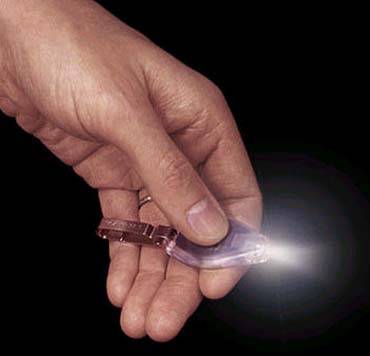 |
The amount of energy will be measured in "joules."
A joule is the energy used by one watt going for 1 second. The penlight
is about 1 watt. So turn it on for one second and you consume one joule
of energy. So one joule isn't much, but 90,000,000,000,000,000 (90 quadrillion)
joules is. |
|
|
We don't normally buy electricity measured
with watts times seconds, we buy kilowatts (1000 watts) times hours. Notice
the arrow points to kilowatt hours. We pay about 10 cents per kilowatt
hour. A toaster consumes about 1,000 watts, so it costs 10 cents to run
a toaster for an hour. |
90,000,000,000,000,000
watt seconds x kilo x 1 hour
1000 3600 sec.
25,000,000,000
kilowatt hours
or 25 billion kilowatt hours.
|
We've replaced joules with watt seconds (which means watts
x seconds). By dividing by 1000 and 3600, we get kilowatt-hours. |
|
This is the Palo Verde nuclear power plant.
It can generate about 4,000,000 kilowatts of power. (Same as powering 4
million toasters). Divide 4,000,000 kilowatts into the 25,000,000,000 kilowatt-hours
needed, gives us hours. The answer is 6,250 hours or 260 days. So
Palo Verde nuclear power plant would have to put out maximum power 24 hrs
a day for 260 days to create enough energy to create the 2.2 lbs of matter
for our cake. Our electric bill will be 3 billion dollars. I didn't say
making a cake from scratch was cheap. |
|
|
What we need is 3 billion dollars worth of high energy
photons called gamma rays. A photon is a packet of light. It travels in
waves. The higher the energy the closer the waves are. Unfortunately, electric
companies produce electricity not photons. |
| In some parts of the universe, gamma rays are
plentiful. Below, a black hole (a collapsed star) is devouring another
star. As the material falls into the black hole, jets of particles
and gamma rays shoot out. These gamma rays could produce the matter
we need. But going there is impractical. |
|
|
| Also, when the universe was young,
it was filled with gamma rays, so the creation of matter was common. But
now, we have to work hard to create gamma rays here on Earth. |
|
|
| Fortunately, there are huge facilities
(below) that can accelerate particles and smash them into targets and make
gamma rays. The image in the upper right, shows the tracking of particles
inside a cloud chamber. The yellow arrow shows
were a high speed particle collided with another particle. Four particles
scattered. Gamma rays were produced (but you can't see their trail). The
green arrow shows were the gamma rays joined
to form two new particles that split away from each other in a loop motion.
The bottom loop is an electron and the top loop is a positron (an anti-electron).
Electrons have a negative one charge and positrons
have a positive one charge. They loop in opposite
directions because there is a magnetic field in this chamber, which causes
charged particles to move in curved paths. Also, opposite charges curve
in opposite directions. |
|
|
| One way we create light is to
accelerate electrons and then slam them into
a metal plate. We accelerate them by crowding them on a wire. They will
repel each other, and in doing so an electron might break away from the
wire. Also, if you have a metal plate with an excess of positive
charge, the electron will accelerate towards
that plate. Electrons slam into the plate and come to stop. That energy
of moving fast has to go somewhere (kinetic energy
is energy gotten from motion). That energy
normally is converted to light. With 2 or 3 volts, the light is visible
light you can see. With 110 volts (like an arc welder) you also get ultraviolet
light, which you can't see. But ultraviolet light has enough energy to damage
your eyes. At 100,000 volts the light given off is x-rays. X-rays have the
energy to pass through objects, but not enough energy to convert to particles.
However, at 1 million volts... |
|
|
| A million
volts is enough to push a spark several feet. The guy belows likes to build
Tesla coils. This one is producing about half a million volts. The sparks
below are slowed down by air. But if he could double the voltage and have
the electrons in the sparks fly through a vacuum and slam into a metal target,
the resulting light created would be gamma rays. |
|
|
| With a million volts,
the light created when the electrons come to halt will be gamma rays. When
two of these gamma rays collide, they can disappear and in their place will
be two new particles. In this case one electron and one positron. For our
cake, we only want the electron. Of course, we will need a lot of electrons. |
|
|
| To make a cake, we need the elements
carbon, hydrogen, oxygen, nitrogen, and sulfur. However, electrons aren't
enough to build these elements, we need protons and neutrons. If we crank
up the voltage to one billion volts, our higher energy gamma rays could
produce protons and neutrons. Anti-protons and anti-neutrons (antimatter)
are also produced, but we only want the protons and neutrons. A billion
volts is enough to create a lightning bolt that reaches halfway around the
Earth. |
|
|
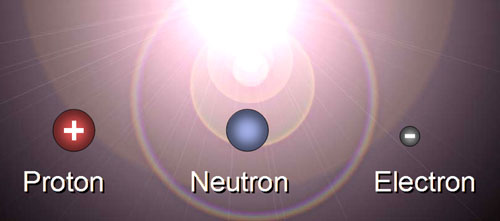 |
After spending 3 billion dollars for 25 billion
kilowatts-hours of energy, and creating voltages that could send lightning
bolts around the world, we end up with enough neutrons, protons, and electrons
to make our cake. These three particles are the first solid building blocks.
Light was the first building material, but it's hard to call light blocks.
|
|
|
In the next tutorial, we learn
how these three particles become building blocks for all the elements. |
